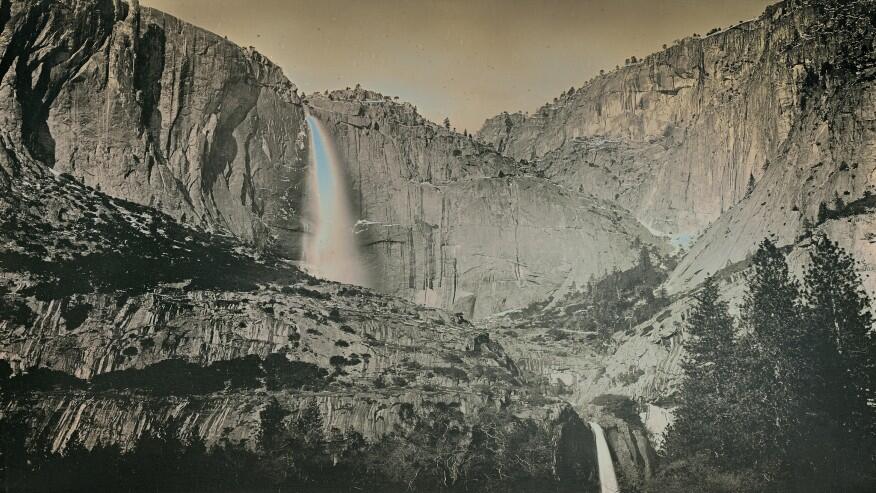Standing in front of photographer Binh Danh’s daguerreotype of Yosemite Falls, on display at the National Gallery of Art in Washington, D.C., I saw myself staring back through the image. If you look at a daguerreotype in person (unfortunately you can’t tell on a screen), you can see your reflection in the silver plate. At first I tried to move off to the side to get an unobstructed view, until I realized that being confronted with my reflection might be part of the experience. It turns out that this is exactly what Danh had in mind. “Conceptually, I hope one contemplates the land in relationship to one’s body and even identity.”
As a child, Danh would pore over “magical and mysterious” photos of Yosemite. But as an adult, they paralyzed him. “Those photographs kept me away from visiting the park,” he says. “It seemed all views of Yosemite had been taken and there was no more that I could say about it.”That all changed when Danh decided to learn a new photographic process, one of the first ever invented: the daguerreotype. Historically, they were mostly used to capture portraits of loved ones on a handheld scale, but Danh realized he could push the boundaries of that small scale to take in new kinds of views. “I realized that there was a whole genre of photography to explore with this medium: landscape photography.” He finally had the angle he needed to take on Yosemite.
One of the first things you’ll notice about these images is that they’re kind of blue. But they’re not hand-colored or toned post-process. Daguerreotypes are naturally sensitive to blue and ultraviolet light, meaning the brightest spots, like the sky or a waterfall, take on a blue tint when overexposed.
Danh spent his whole life in the shadow of a black-and-white Bridalveil Falls, as pictured by iconic photographers like Carleton Watkins and Ansel Adams. By adopting a new-to-him historic process, he unlocked a visual language to reimagine an iconic American symbol. A language that creates space for the awestruck, the curious, or even just the passerby to find themselves in the landscape. Danh’s family history of migration continues to impact his work as an artist; it’s part of what fascinated him about the parks to begin with. “This quote by Carl Pope from the Ken Burns’ PBS series The National Parks: America’s Best Idea sums up my feeling of the Yosemite series,” he says: “My sense is that our special connection with the national parks comes from the fact that we’re a nation of immigrants. We’re a nation of people for whom this is not our home, and the national parks are what anchor and root us on this continent. They are the meaning of home for many of us. They’re what it means to be an American, to inhabit this continent. It’s at the end of the immigrant experience, and they’re what take you and say, ‘Now I am an American.’” (national geographic)















